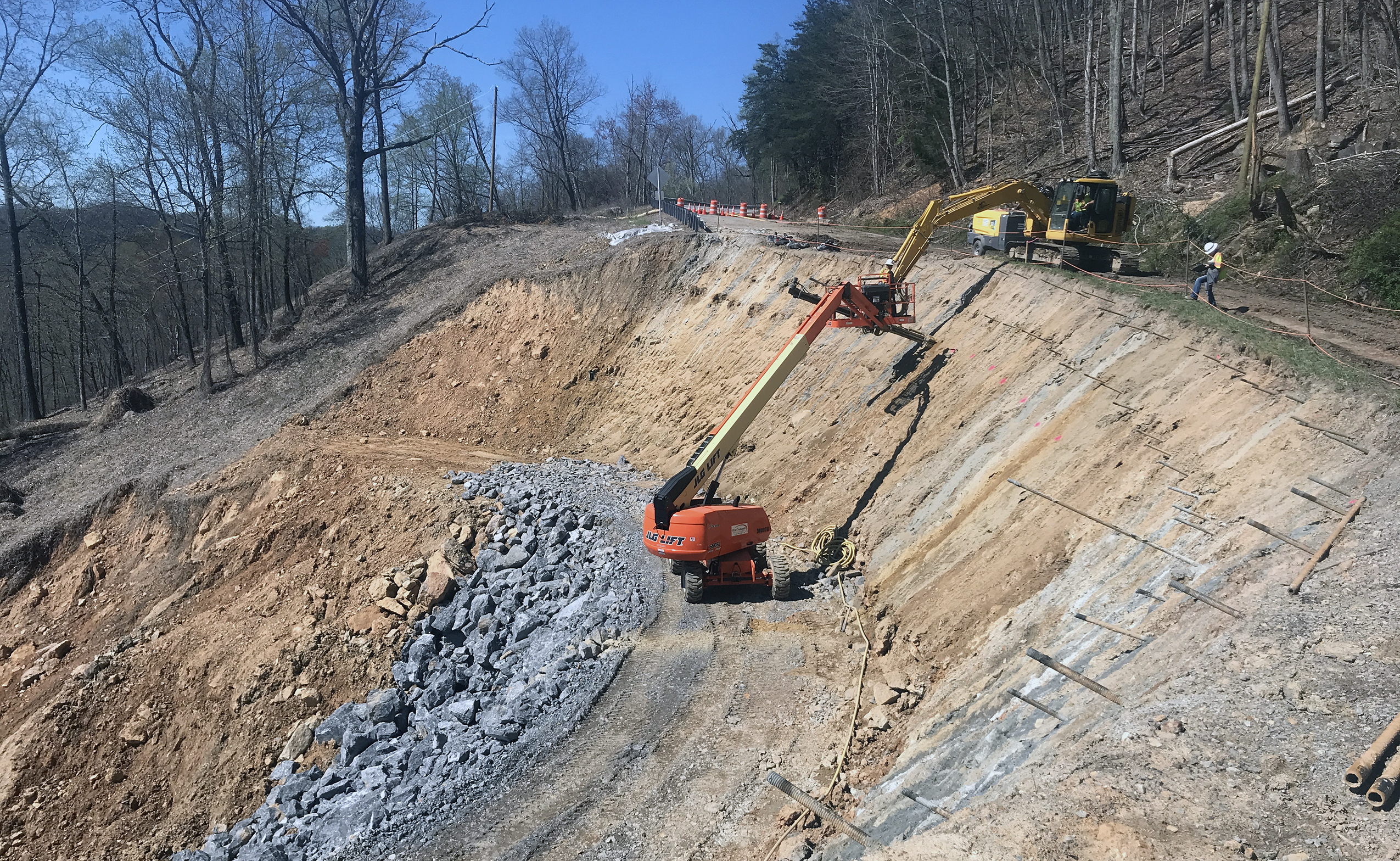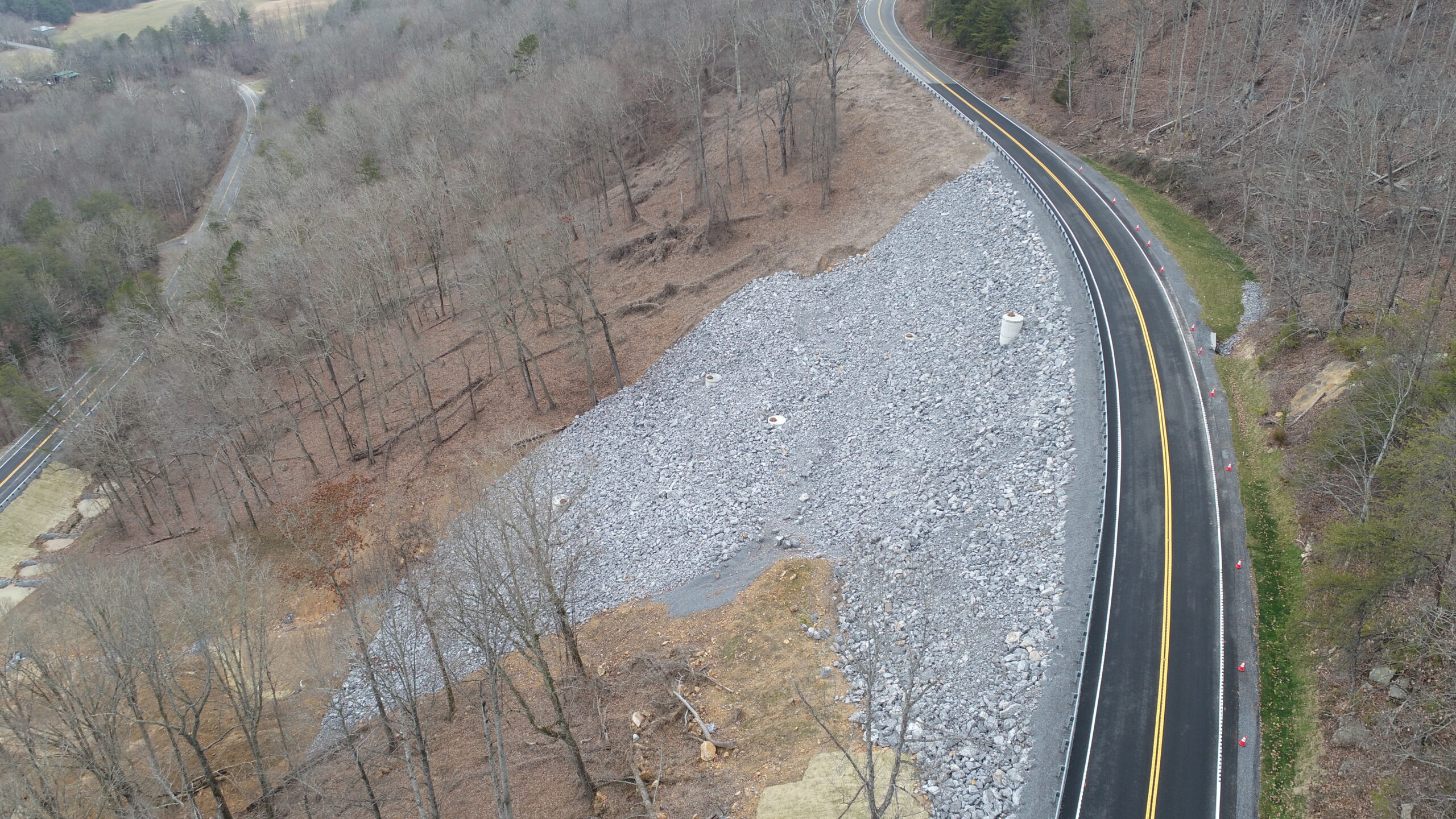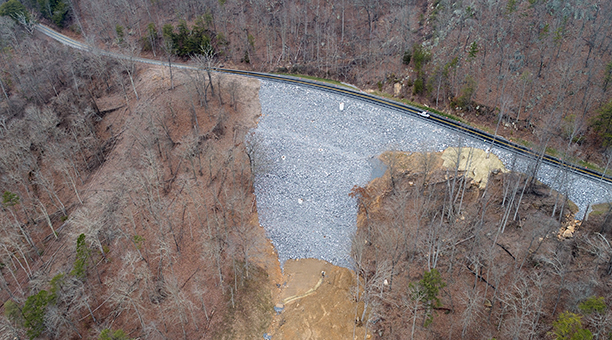







When severe flooding in February 2019 triggered a major landslide on State Route 70 in Hawkins County, Tennessee, both lanes of this critical roadway were destroyed, cutting off essential access for the local community. Before officials could close the road, two vehicles had already gone over the failed slope, highlighting the immediate geohazard risks and the need for rapid landslide remediation.
The road closure had a lasting impact on the community, forcing lengthy detours that added up to 1.5 hours to daily commutes. Local schools reduced their weekly schedules to four days to ease the strain on students enduring two-hour bus rides. GeoStabilization International was engaged to deliver an emergency landslide repair and roadway stabilization solution to restore safe access and protect public safety.
The landslide left steep, unstable terrain with gradients as severe as 1:1 near the roadway and 1.5:1 further downslope. Persistent rain and ongoing ground movement created hazardous working conditions. GeoStabilization’s specialized crews, trained in rope-access techniques, safely executed soil nail drilling and stabilization work despite these challenges, allowing construction to proceed without delay.
Initial stabilization plans called for soil nails ranging from 30 to 50 feet in length. However, during drilling operations, crews encountered bedrock at shallower depths, allowing the design to be optimized in real-time. By reducing nail lengths and anchoring directly into the bedrock, GeoStabilization minimized project duration and costs while maintaining slope stability.
Horizontal drains were installed to manage groundwater infiltration, a key factor contributing to the slope failure. A dense 5’ x 5’ soil nail pattern provided robust reinforcement, while high-tensile slope stabilization mesh and strategically placed riprap further strengthened the repaired slope. A woven geotextile fabric, uncommon in these applications, was installed beneath the mesh to prevent soil loss and shed surface water, enhancing long-term slope protection.
This project exemplified the benefits of design-build geohazard mitigation—combining responsive engineering with field adaptability to deliver a cost-effective, long-lasting solution. The work restored this vital transportation corridor and safeguarded the community against future landslide risks. In recognition of these efforts, the project received ENR Southeast’s Best Project Award for Specialty Construction.